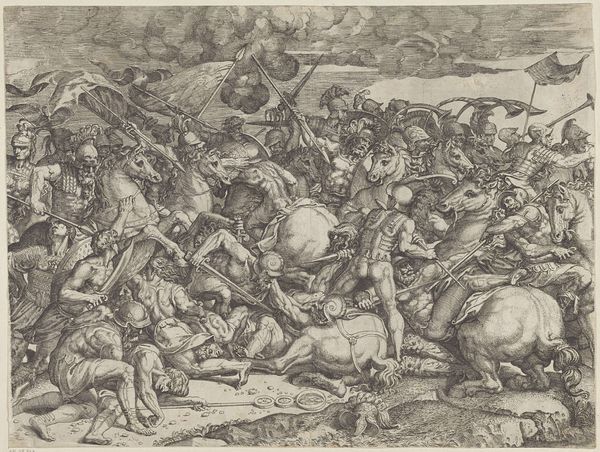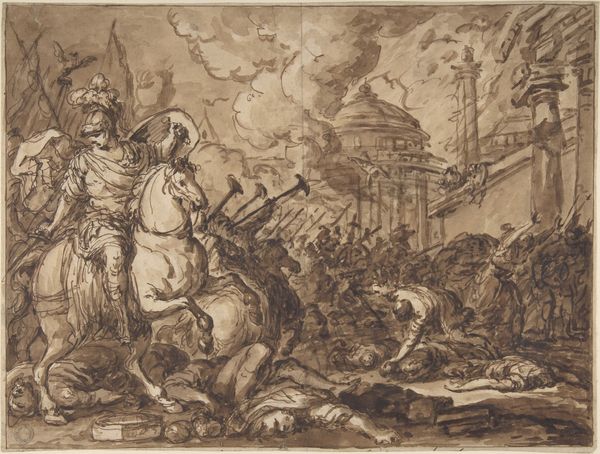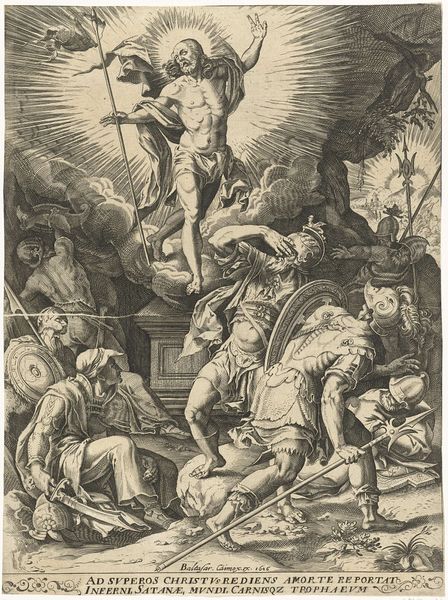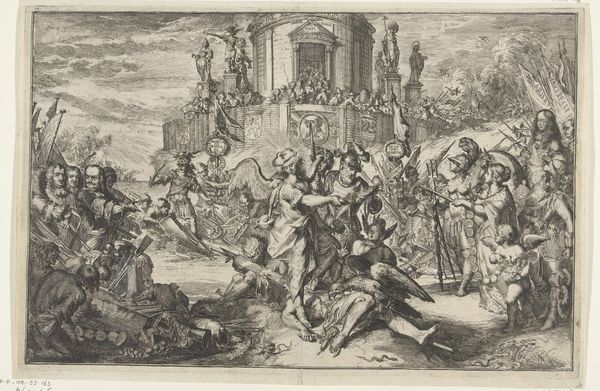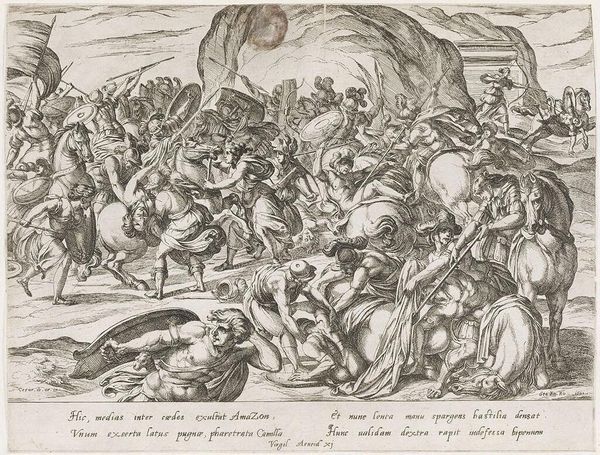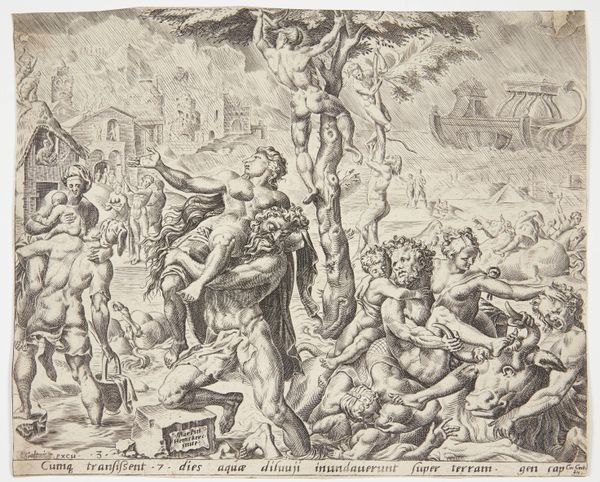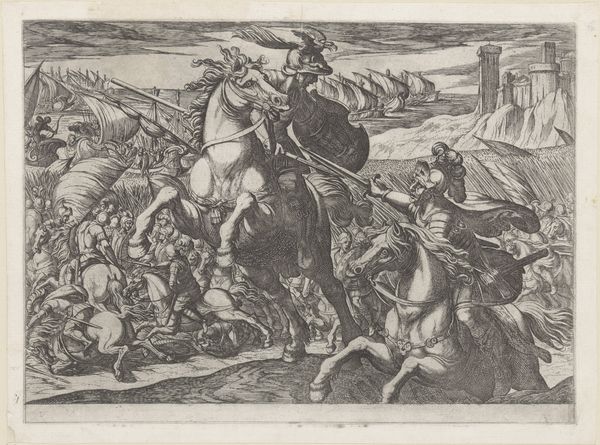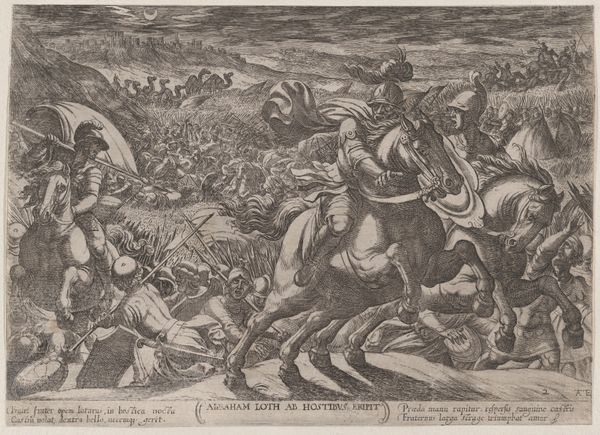
Soldaten van Aeneas vechten met dienaren van koning Latinus 1535 - 1587
0:00
0:00
giovannibattistafontana
Rijksmuseum
Dimensions: height 306 mm, width 416 mm
Copyright: Rijks Museum: Open Domain
Giovanni Battista Fontana made this print, "Soldiers of Aeneas fighting with servants of King Latinus," sometime in the 16th century. Here we see a chaotic battle scene rendered in the graphic style typical of the period. The image derives its meaning from Virgil's "Aeneid," a foundational text for Roman identity. Virgil’s epic poem tells a story that links the founding of Rome to the Trojan war. By illustrating the "Aeneid," Fontana connects his art to this grand narrative of Roman history. During the Renaissance, there was a renewed interest in classical literature and art. Artists, writers, and intellectuals looked to ancient Greece and Rome for inspiration. Powerful families, especially in Italy, sought to legitimize their power through association with Roman ideals. The story goes that Aeneas, a Trojan hero, fled to Italy and became an ancestor to Romulus and Remus, the founders of Rome. To fully understand Fontana's print, we can research the artistic conventions of 16th-century printmaking, the cultural significance of Virgil's "Aeneid" and the patronage system of the time. Only then can we appreciate how Fontana’s image reflects the social, cultural, and institutional context in which it was made.
Comments
No comments
Be the first to comment and join the conversation on the ultimate creative platform.
